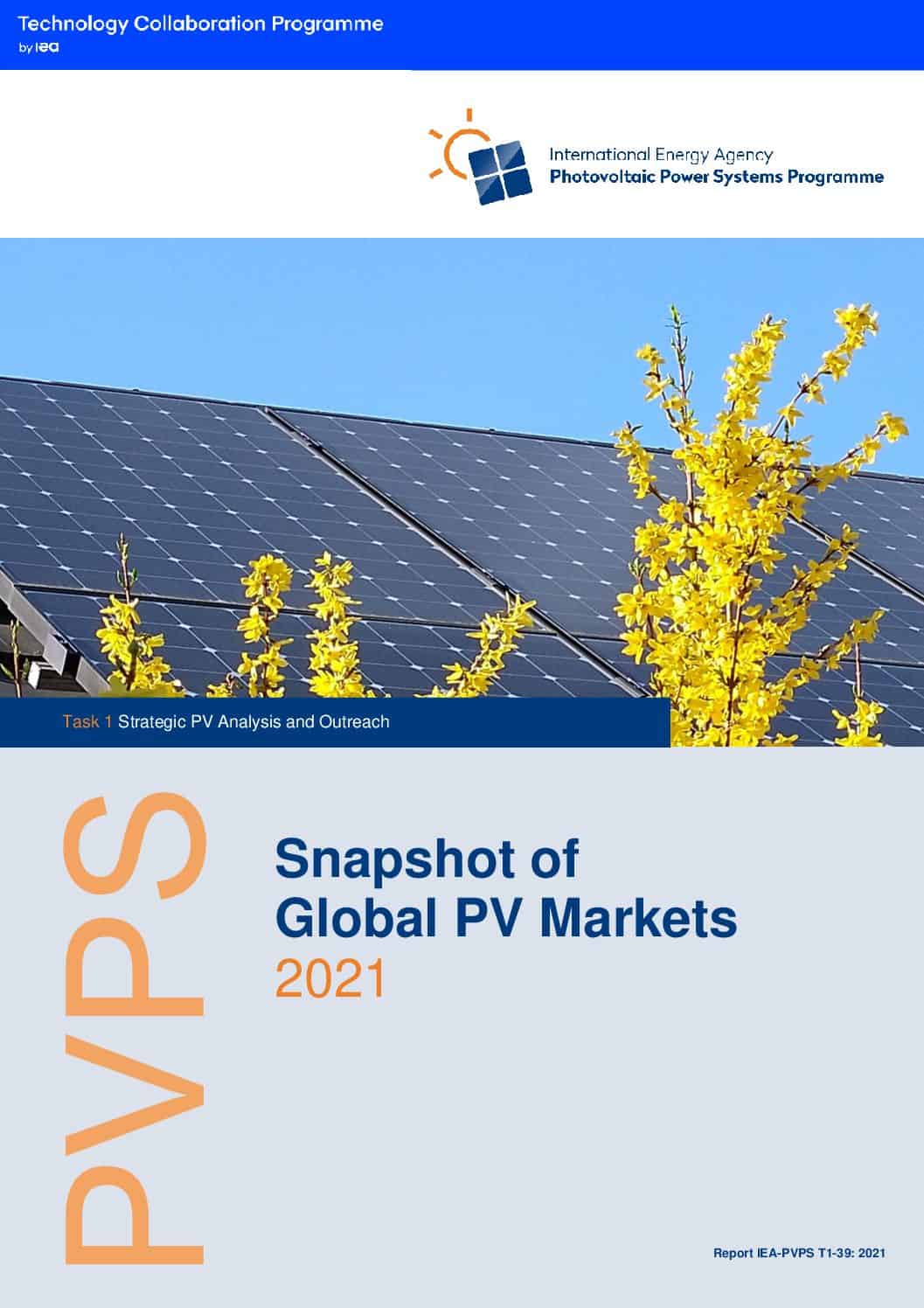Executive summary
Despite the COVID-19 pandemic, preliminary reported market data shows that the global PV market again grew significantly in 2020. At least 139,4 GWdc of PV systems have been installed and commissioned in the world last year. The total cumulative installed capacity for PV at the end of 2020 reached at least 760,4 GWdc. While these data will have to be confirmed in the coming months, some important trends can already be extracted:
- The Chinese PV market went back to a market level it experienced in 2017, after two years in a row of market slowdown. In 2020, 48,2 GW of PV were installed, compared to 43,4 GW in 2018 and 30,1 GW in 2019. China remains the leader in terms of cumulative capacity with 253,4 GW installed, almost one third of the global PV installed capacity.
- Outside of China, the global PV market grew from 79,2 GW in 2019, to at least 90 GW in 2020, a 14% increase year on year.
- The European Union installed close to 19,6 GW and the rest of Europe added around 2,6 GW. The largest European market in 2020 was Germany (4,9 GW), followed by the Netherlands (3,0 GW), Spain (2,8 GW), Poland (2,6 GW), Belgium (1,0 GW) and France (0,9 GW).
- The US market saw its market increasing to 19,2 GW; a new record, with utility-scale installations accounting for about 73% of the new additions.
- Vietnam takes the fourth place with an impressive annual installation of 11 GW.
- Japan ranks fifth, with an estimated 8,2 GW annual installed capacity.
- Some other key markets contributed significantly to new additions in 2020, such as India (close to 5 GW, but in significant decline compared to last years), Australia (4,1 GW), Korea (4,1 GW), Brazil (3,1 GW), Taiwan (1,7 GW), Mexico (1,5 GW), followed by the Philippines (1,1 GW) and South-Africa (1,0 GW). Preliminary numbers show to Mexico and South Africa could have installed close to 1 GW as well.
- Among the top 10 countries, there are now six Asia-Pacific countries (Australia, China, India, Japan, Korea and Vietnam), two European countries (Germany and the Netherlands) and two countries in the Americas (Brazil and the USA).
- The level to enter the top 10 global markets in 2020 was around 3,0 GW; a stable level compared to 2019 and twice the level needed in 2018.
- The top 10 countries represented around 78% of the global annual PV market, a slight increase compared to 2019. However, compared to previous years, the market is still showing a decreasing market concentration trend.
- Honduras, Australia, Germany, Greece, Chile, Spain, the Netherlands, Italy, Japan, Israel, Belgium, India, China, and Turkey now have enough PV capacity to theoretically produce more than 5% of their annual electricity demand with PV. PV represents around 3,7% of the global electricity demand.
The contribution of PV to decarbonizing the energy mix is progressing, with PV saving as much as 875 million tons of CO2eq. However, much remains to be done to fully decarbonize and PV deployment should increase by at least one order of magnitude to cope with the targets defined during the COP21 in Paris, France.
